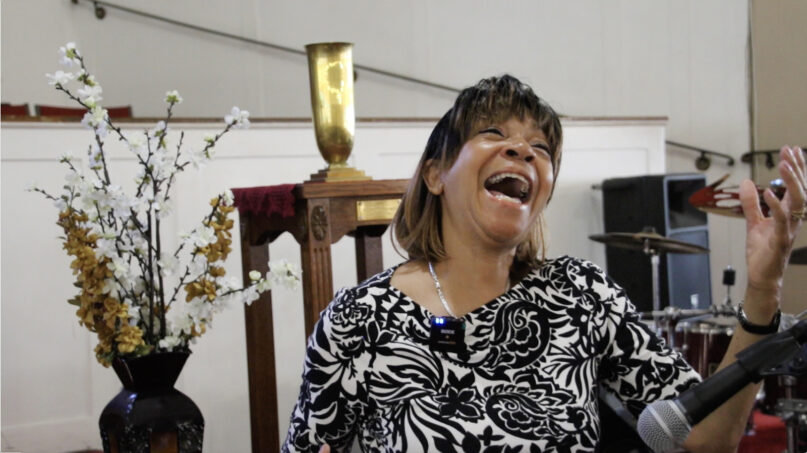According to research published by covidreligionresearch.org in June, Black Protestants attended church on Zoom more than other denominations during the pandemic, and they have been the slowest to return to in‑person worship.
“The internet has taken over and streaming has taken over,” McMillan said. “People don’t go into the building as much as they are streaming it.”
McMillan said that when in-person services first resumed, it took a long time for the choir to rebuild because many members were still staying home for health reasons. Recently, though, he’s seen more people showing up.
“I’m begging people my age to come to Concord,” said Howard, the youngest member of the gospel choir, adding that only a handful of people around her age attend the church.
Gwen Davis, a senior member of Berean Baptist Church and a choir soloist for more than 40 years, recalled Easter services in the mid‑1960s, when over 400 people filled the pews and four separate choirs led the congregation in song.
“It was a lot of energy,” Davis said. “Your ear got trained really well.”

Gwen Davis sings at Berean Baptist Church on Bergen Street in the Crown Heights neighborhood of Brooklyn, July 31, 2025. (RNS photo/Fiona Murphy)
Today, Davis said, a typical service attracts approximately 150 people, and roughly 100 virtually. Over time, Berean’s choirs have consolidated into a single mass choir with approximately 20 singers.
A professional soloist who has been singing at different churches across Brooklyn throughout her adult life, Davis said she believes one reason for choirs thinning out is the decline of music education in New York City Public Schools.
“When I was in high school, I had music every day,” said Davis, who attended high school in the 1970s in central Brooklyn. “I don’t think the children are learning notes and sharps and clefs. I mean, that was like general knowledge for us at the time.”
During the 1970s fiscal crisis, the city of New York eliminated thousands of teaching positions, including art and music teachers, and converted music rooms into other classrooms, narrowing arts access in schools in low-income and majority-Black neighborhoods.
“For me, singing is not just singing, it’s ministry,” Davis said. “Some of these old hymns were composed years and years ago, and those old hymns have sustained a people — many people.”
Gentrification is another force reshaping Brooklyn. Between 2010 and 2020, Crown Heights lost nearly 19,000 Black residents while gaining about 15,000 whites, according to 2020 Census data. More than 75% of Bedford-Stuyvesant residents in 2000 were Black, while in 2020, around 41% were Black.


